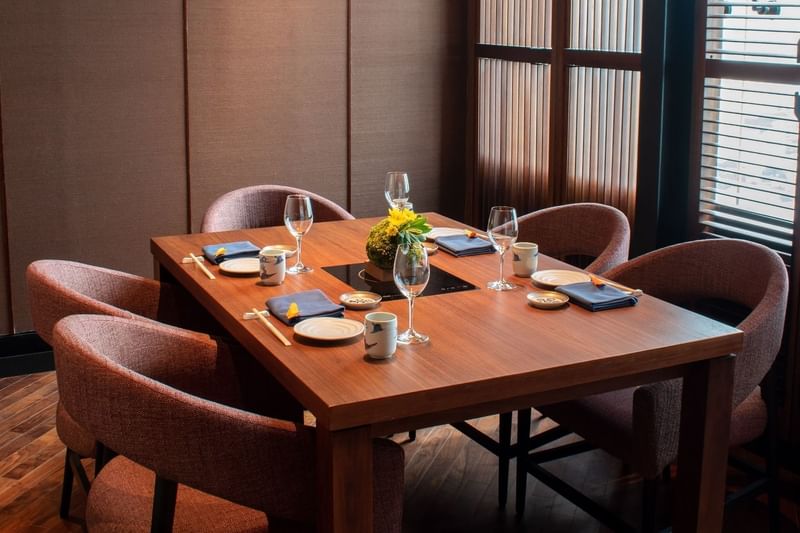
Visiting private dining restaurants near me isn’t just about velvet curtains and curated menus—it’s about creating a space where elegance meets intimacy. Whether it’s a milestone birthday, a power lunch, or a luxe night out with the crew, stepping into a private dining room adds a whole new level of finesse to your night.
But let’s be real: with great ambiance comes great responsibility. Want to host or attend like a pro? Here’s your ultimate crash course in private dining etiquette—no stiff collars or awkward silences required.
1. For Hosts: Plan It Like You Mean It
If you’re hosting, you’re the captain of this deliciously classy ship. That means:
Choose the right venue.
Go for a restaurant with a vibe that matches your occasion. A classic steakhouse? Always a power move. Bonus points if it has a private room with ambiance to match—think dim lighting, elegant table settings, and a touch of exclusivity.
Lock in the details early.
Menus, headcount, dietary restrictions, wine pairings—it all matters. Communicate clearly with the restaurant so you’re not stressing over gluten-free appetizers mid-toast.
Send polished invites.
Whether it’s a paper invite or a well-designed email, be clear about the time, dress code, location, and RSVP deadline. Fancy doesn’t mean fussy—but clarity is key.
2. For Guests: RSVP Like a Rockstar
Step one: respond. Promptly.
Private dining at restaurants with outdoor seating near me is intimate, so ghosting the RSVP isn’t just a no-no—it can actually throw off the whole event. If you’re in, be there on time. If you’re out, say so early. And if you have dietary needs? Speak now, not at the table.
Bonus tip: If there’s a theme or dress code, lean into it. Trust us, there’s nothing worse than being the only one in jeans when everyone else got the cocktail memo.
3. Mind the Menu (and the Clock)
Private dining usually means a set menu or limited à la carte options, which is honestly kind of great—it keeps things simple and delicious.
For guests:
Don’t make it weird by requesting off-menu substitutions unless you’ve cleared it in advance. And if you’re running late, give the host or restaurant a heads-up—timing matters when courses are prepped to perfection.
For hosts:
Keep things flowing. No one wants to wait 45 minutes between the starter and the steak. Work with the venue to create a smooth dining timeline so your guests feel pampered, not restless.
4. Cheers, Toasts & Table Talk
If you’re hosting, a short, thoughtful toast is a classy touch—something warm and welcoming that sets the tone. It doesn’t have to be Oscar-worthy, just heartfelt. Bonus if it includes a funny memory or inside joke that lightens the mood.
Guests, take a cue from the host. Don’t jump in with competing toasts or long-winded stories—unless invited to share. Keep the vibe inclusive, and remember: it’s a dinner, not a debate club.
And yes, phones on silent. Unless you’re snapping a quick steak selfie—then post and pocket, please.
5. Tipping, Tab, and Thank Yous
Hosts, if you’re footing the bill (you legend, you), make arrangements discreetly with the restaurant ahead of time—including gratuity. No awkward credit card shuffling, please.
Guests, if the meal is covered, show your appreciation with a sincere thank-you—and maybe a follow-up message the next day. Thoughtfulness never goes out of style.
If it’s a split bill situation, come prepared. Nothing ruins the vibe faster than a Venmo standoff at dessert.
Conclusion: Etiquette, Elevated
Private dining isn’t about rules—it’s about respect, thoughtfulness, and creating unforgettable moments. Whether you’re the host with the most or a guest at the table, good etiquette makes everything smoother, warmer, and way more enjoyable.
So dress the part, mind your manners, and don’t forget to raise a glass to the company you’re with—because that’s the real reason we gather around the table
